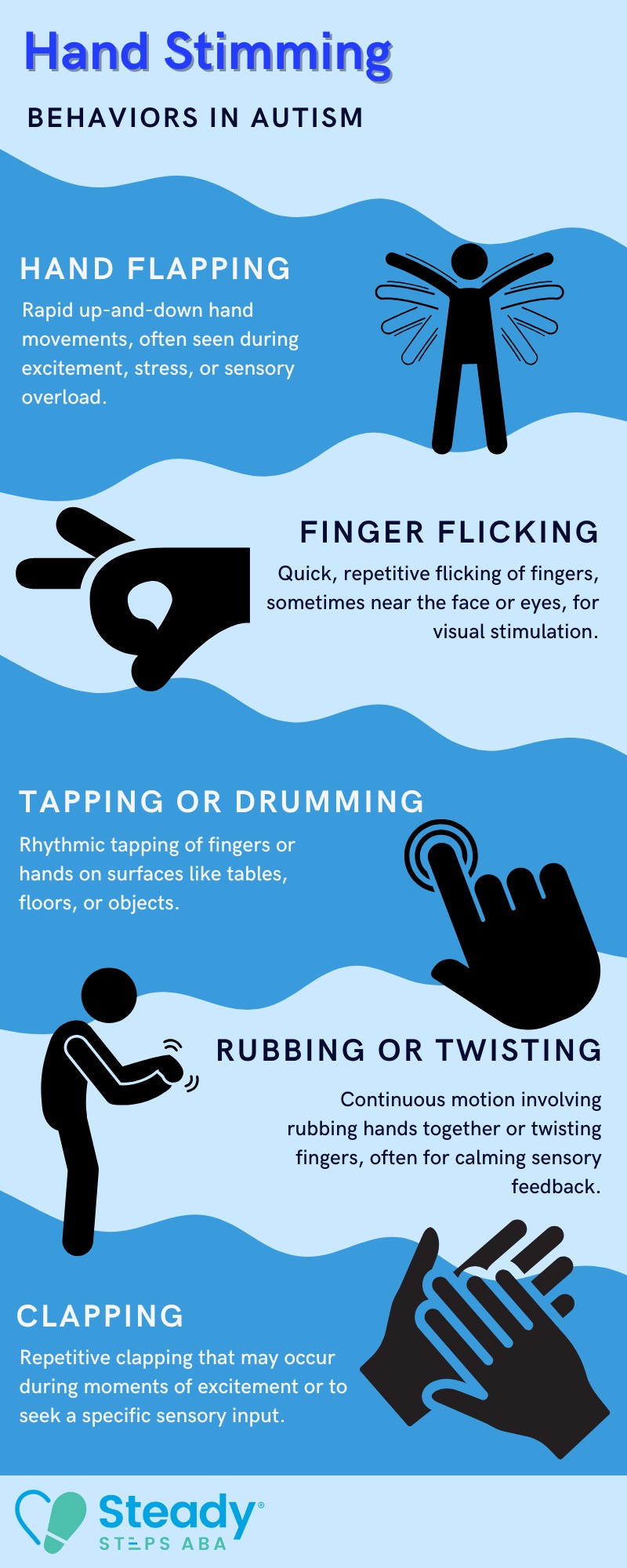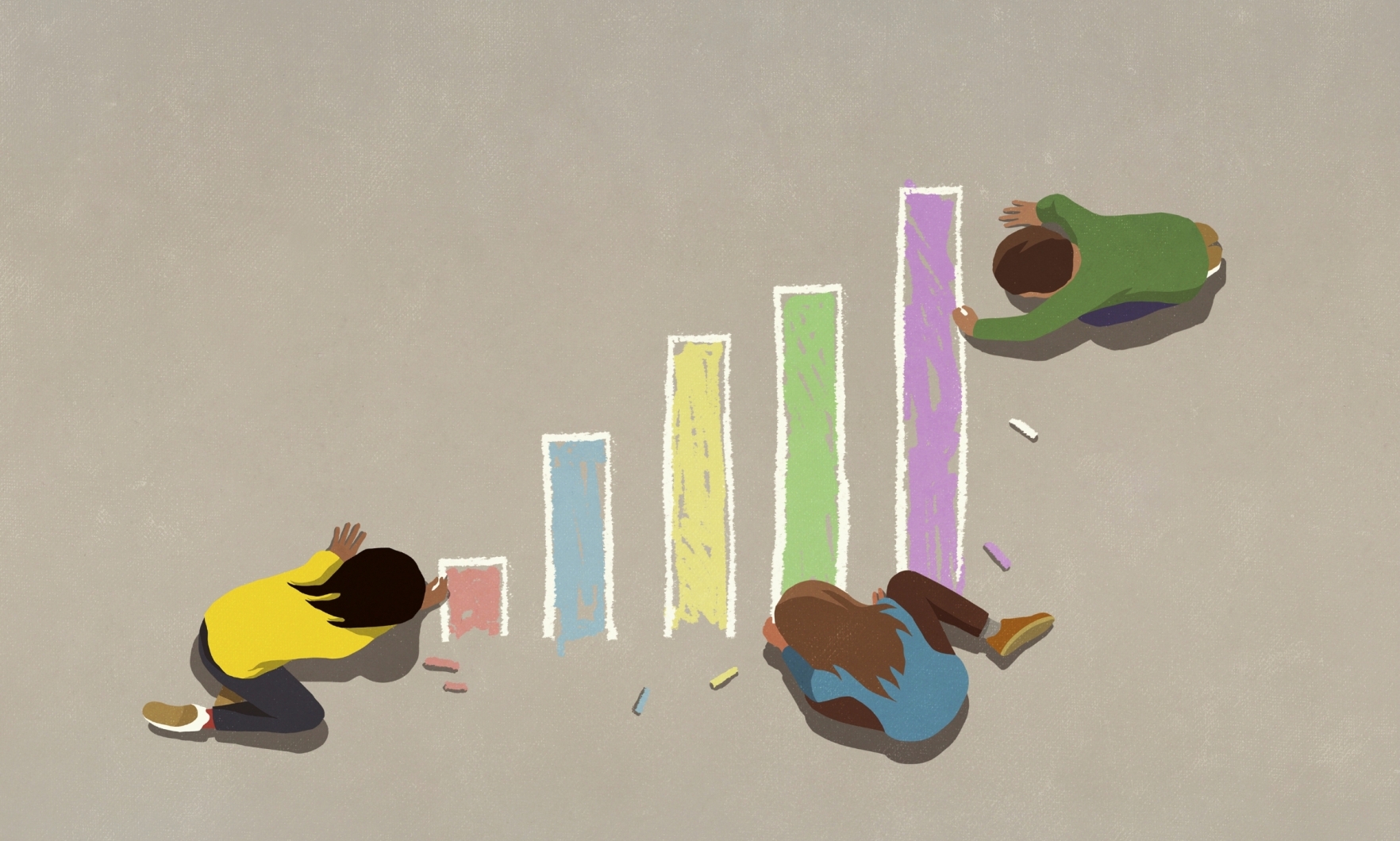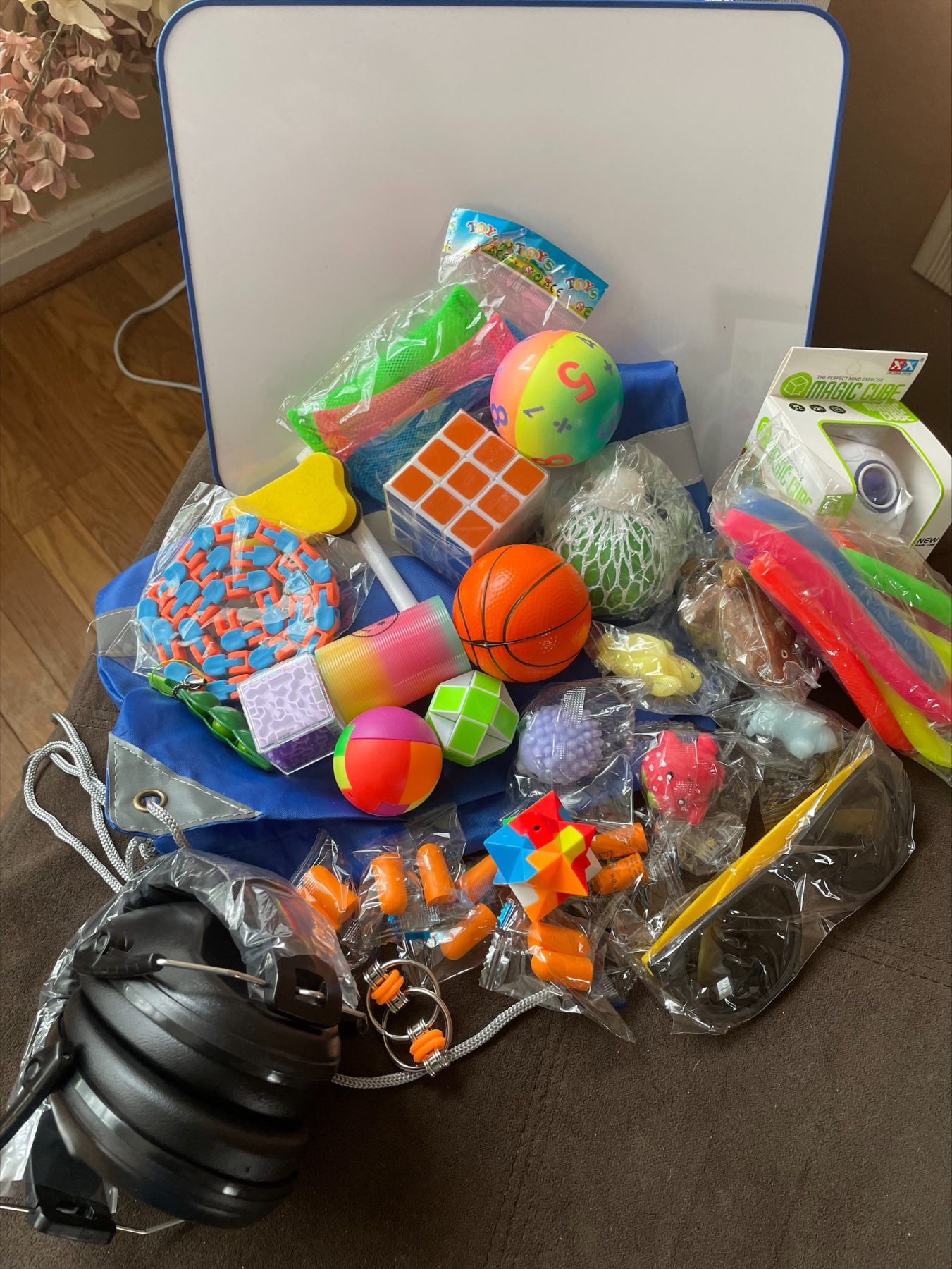Key Points:
- Hand gestures in autism include a variety of communicative and repetitive movements that can indicate needs, emotions, or sensory regulation.
- Understanding the different types of hand gestures and stimming behaviors helps parents and caregivers support communication and self-soothing in autistic children.
- Applied Behavior Analysis (ABA) therapy targets these behaviors to promote functional communication and reduce distress.
Communication and sensory behaviors in autism often include distinct hand gestures that can serve many functions—from expressing needs to regulating sensory input. Parents and caregivers observing these gestures may wonder about their meaning and how best to support their child’s development.
According to studies, approximately 44% of autistic individuals experience some type of stimming behavior, which can include hand gestures. Recognizing the types and functions of these hand gestures can improve communication strategies and reduce frustration for families.
What are Hand Gestures in Autism?
Hand gestures in autism refer to specific movements or signals made with the hands that serve as forms of communication or self-regulation. These can include intentional signs meant to convey a message, as well as repetitive motions used to stimulate or calm the sensory system.
Unlike typical hand gestures that generally support spoken language, gestures in autism can be diverse in function and form. They may indicate requests, discomfort, excitement, or be part of stimming behaviors, which are repetitive, rhythmic movements that provide sensory feedback.
Understanding the difference between communicative gestures and stimming hand movements is essential for interpreting what the autistic individual is expressing.
What Types of Hand Gestures Are Common in Autism?
Hand gestures in autism fall into two broad categories: communicative gestures and stimming behaviors. Both play important roles but serve very different purposes. Communicative gestures are purposeful and aim to convey a message. These include:
- Pointing to indicate interest or request.
- Reaching out to ask for help or an item.
- Waving hello or goodbye.
- Using sign language or picture exchange to communicate.
On the other hand, stimming hand gestures are often repetitive and provide sensory input. These may include:
- Hand flapping
- Finger flicking or twisting
- Clapping or tapping
- Repeated rubbing or rubbing hands together
Both categories can overlap or coexist, and context helps determine their meaning.
How Can Parents Distinguish Between Communication and Stimming?
Deciphering whether a hand gesture is meant to communicate or is a form of self-stimulation is a common challenge. The context in which the gesture occurs is key to understanding its purpose.
For instance, if a child points at a toy while looking at a caregiver, this likely indicates a request. Conversely, if the child repeatedly flaps their hands when excited or overwhelmed, this is more likely to be stimming. Observing patterns and the child’s overall behavior can provide clues.
Signs that a hand gesture is communicative include:
- Occurs in response to environmental stimuli.
- Accompanied by eye contact or vocalizations.
- Results in a reaction from others (e.g., receiving the requested item).
- Happens during social interaction.
Signs that a hand gesture is stimming include:
- Occurs repetitively without obvious triggers.
- May increase during stress or sensory overload.
- Provides calming or pleasurable sensory feedback.
- May not lead to social responses.
Understanding these signs helps caregivers respond appropriately and support the child’s needs.
Why Do Autistic Individuals Use Hand Gestures and Stimming Behaviors?
Hand gestures serve as essential tools for communication, especially when verbal language is delayed or limited. For many autistic children, nonverbal communication through gestures is a first step toward more complex language.
Stimming behaviors, including hand movements, help regulate sensory input and emotional states. Autism often involves differences in sensory processing, so repetitive movements can soothe the nervous system, reduce anxiety, or provide sensory stimulation that is otherwise lacking.
What are Common Stimming Behaviors Involving Hands?
Stimming behaviors involving the hands are some of the most commonly observed forms of self-stimulation, especially among individuals with autism. These repetitive movements serve various purposes, such as regulating emotions, processing sensory input, or expressing excitement.
Understanding these behaviors can help caregivers and educators better support a child’s sensory needs while recognizing when intervention may be helpful if the behavior becomes disruptive or unsafe.
Examples include:

These behaviors serve as coping mechanisms, although they may sometimes interfere with daily activities or social interaction.
How Can Caregivers Support Positive Hand Gesture Development?
Caregivers can support positive hand gesture development by modeling functional gestures, encouraging imitation, and reinforcing intentional use during everyday routines. Using gestures like pointing, waving, or reaching alongside spoken words helps children connect actions with communication.
Creating gesture-rich environments, offering choices, and celebrating small successes build engagement and encourage natural learning. If a child shows delays or challenges, collaborating with speech or occupational therapists can provide targeted strategies to enhance gesture use and overall communication skills.
When Should Stimming Behaviors Be Addressed?
Stimming behaviors are often a natural part of how individuals with autism regulate their emotions, manage sensory input, or express excitement. In many cases, these behaviors are harmless and don’t require intervention. However, there are situations where addressing stimming becomes necessary to support the child’s well-being, learning, or social development.
Stimming behaviors should be addressed when:
1. Stimming Interferes with Learning
If a child’s stimming distracts them from focusing on tasks or participating in therapy or classroom activities, it may limit their ability to acquire new skills or engage meaningfully with others.
2. Safety Becomes a Concern
Some stimming behaviors, such as head banging, skin picking, or biting, can be physically harmful. These self-injurious actions must be addressed immediately to protect the child’s health and safety.
3. It Impacts Social Interaction
Stimming that is highly noticeable or unusual may make social interactions more difficult. If a child is excluded by peers or struggles to participate in group settings, addressing the behavior gently and supportively can help.
4. The Behavior Escalates in Frequency or Intensity
If a child’s stimming increases significantly over time, it may signal heightened stress, anxiety, or an unmet need. Understanding the underlying cause can guide more effective interventions—and in many cases, this may involve identifying patterns of avoidance or distress. To explore this further, check out Why Escape Behavior Happens and How ABA Can Help You Manage It.
How Does ABA Therapy Address Hand Gestures and Stimming?
Applied Behavior Analysis (ABA) therapy plays a central role in teaching functional hand gestures and managing stimming behaviors. ABA uses systematic observation and reinforcement to increase meaningful communication and reduce behaviors that interfere with learning.
Therapists work closely with families to:
- Identify the functions of specific gestures or stimming.
- Teach alternative communication strategies to replace non-functional gestures.
- Provide sensory supports to meet the child’s needs.
- Encourage generalization of skills across environments.
ABA therapy aims to empower autistic individuals to express themselves effectively and navigate sensory challenges with confidence.
How Can Parents Collaborate with Professionals on Hand Gesture Development?
Parents and caregivers are vital partners in promoting effective hand gestures and managing stimming. Open communication with therapists and educators ensures consistency and maximizes progress.
Regularly sharing observations about hand movements, triggers, and responses helps shape individualized plans. Parents can also learn strategies to encourage communication at home and in the community.
This partnership fosters a supportive environment where the child’s unique needs are understood and respected.
Take the Next Step Toward Progress with ABA Therapy
Understanding hand gestures in autism is essential for recognizing communication and sensory regulation needs. At Steady Steps ABA, we specialize in ABA therapy in Maryland tailored to teaching meaningful hand gestures and managing stimming behaviors.
Our experienced team collaborates with families to build effective communication skills and create individualized strategies that respect each child’s sensory profile. With compassionate support, Steady Steps ABA helps children develop functional gestures that improve connection and independence.
Contact us today to learn how our ABA therapy can help your family nurture communication and manage behaviors in Maryland.






